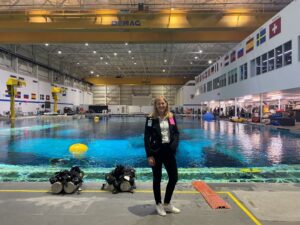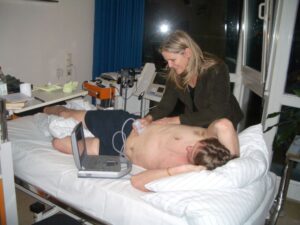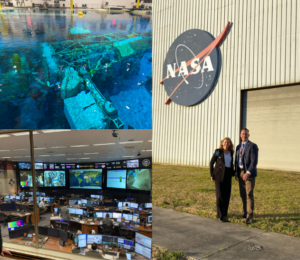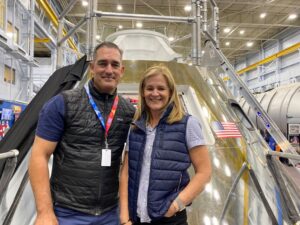World-Leading Researchers Gather at Griffith University to Tackle Space Health Challenges
Researchers from Griffith University and the University of Sydney (USYD) have joined forces with leading figures in science and clinical medicine to help solve the challenges of spinal pain in space and enhance the sustainability of space missions.

Professor Julie Hides from Griffith’s School of Health Sciences and Social Work and Professor James Elliott, Director of Sydney’s Kolling Institute, were recently invited by the National Aeronautics and Space Administration (NASA) to contribute their expertise in musculoskeletal health at the renowned Johnson Space Centre in Houston.
Due to the lack of gravity in space, astronauts are predisposed to muscle atrophy, bone loss and spinal pain.
“On Earth, when we are upright, gravity loads the spine and this loading is important for maintaining the health of spinal tissues,” Professor Hides said.
“In the case of astronauts in microgravity, the intervertebral discs can imbibe fluid and the spinal curves flatten, resulting in lengthening of the torso.
“Astronauts can come back to Earth 5-8 centimeters taller.”
Whilst Professor Hides said the changes that occurred in space were a natural adaptation of the human body to microgravity, those changes could create serious issues when astronauts returned from space.

Having worked with the European Space Agency for more than 20 years, Professor Hides presented results from three prolonged bedrest studies, simulating decreased gravitational loading on the spine.
These studies involved volunteers going to bed six degrees head down for 60 days without rising; the effects of interventions tested both before and after bedrest.
Professor Hides also presented research on the effects of microgravity on astronauts’ back muscles and the effectiveness of exercises to recondition these muscles post bedrest and exposure to microgravity.
Together with NASA flight surgeon Dr Rick Scheuring, Professor Hides has since helped develop a protocol for ultrasound imaging of trunk muscles in space.
“Dr Scheuring was in Kazakhstan before a mission and I was facetiming in from Australia late at night,” she said.
“We were establishing an imaging protocol that would allow one astronaut to image another astronaut on the International Space Station.”
The success of this muscle-imaging protocol was noted at the NASA meeting, having been approved and formally adopted on the International Space Station.
“The use of ultrasound imaging equipment on the international space station has two advantages: the equipment is small and compact, and it can show you the muscles contracting in real-time,” Professor Hides said.

“This means that we can measure both changes in muscle size and ability to contract spinal muscles in space.
“Whilst we have had access to ultrasound images of muscles before and after six months on the International Space Station, monitoring astronauts whilst in space will allow assessment of how quickly muscle size decreases, thus providing important information to allow development of appropriate exercise interventions.”
As well as ultrasound imaging, NASA are performing MRIs of astronaut’s spines pre and post spaceflight.

“NASA has expressed an interest in our MuscleMap program, which is a revolutionary technique to automatically assess or measure whole-body skeletal muscle composition using high-resolution MRI,” Professor Elliot said.
“The MuscleMap program could be an assessment tool to help target more effective ways to improve their pain and performance when they’re in space, when they get home, and in preparation for future missions.”
The combination of ultrasound imaging, supported by Professor Hides’ clinical research, and MRI muscle mapping, led by Professor James Elliot, would enable close monitoring of skeletal muscle composition to improve long-term astronaut health.
Further, Professor Hides said that whilst the research would directly benefit astronaut health and space travel, it could also be translated to terrestrial patients suffering from musculoskeletal conditions.

